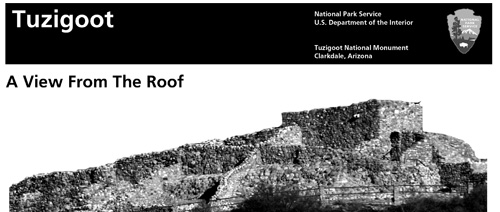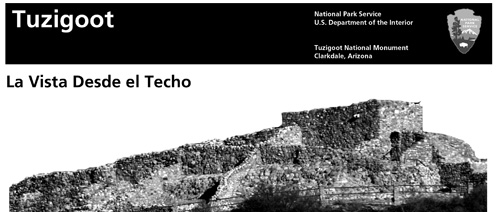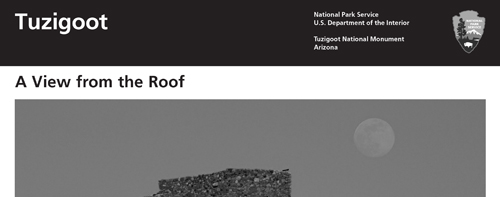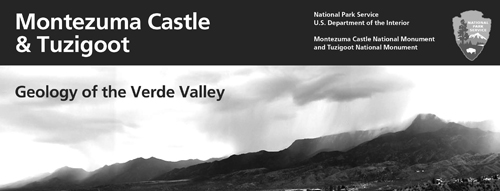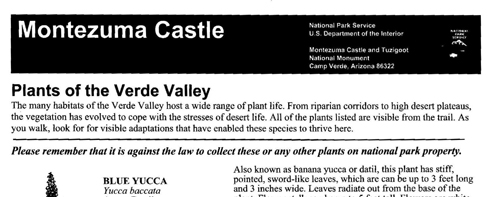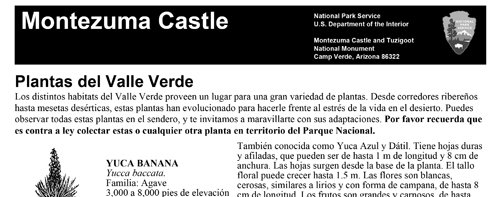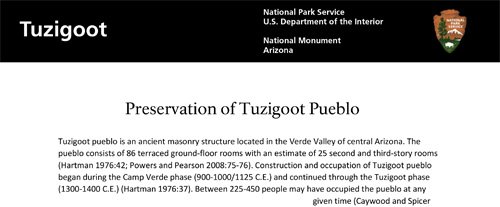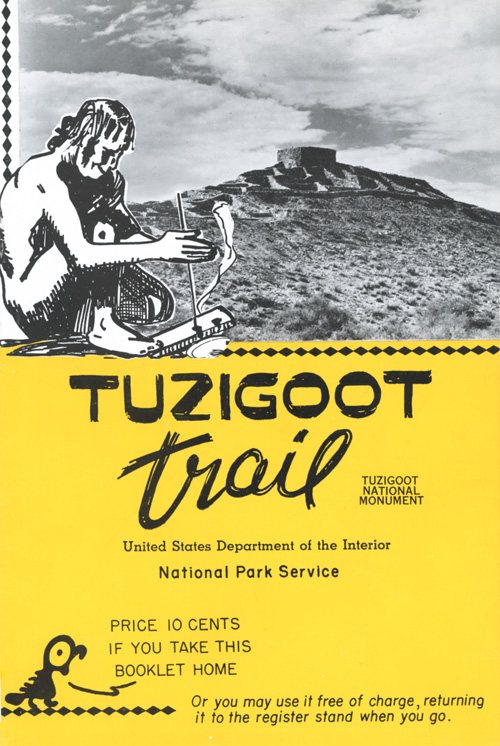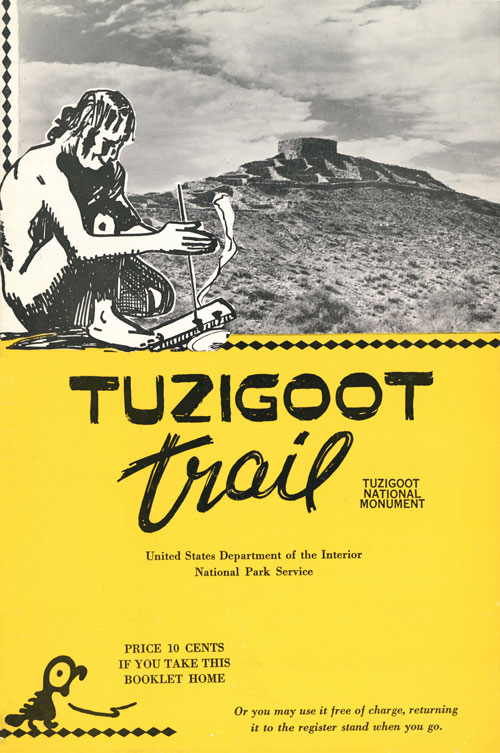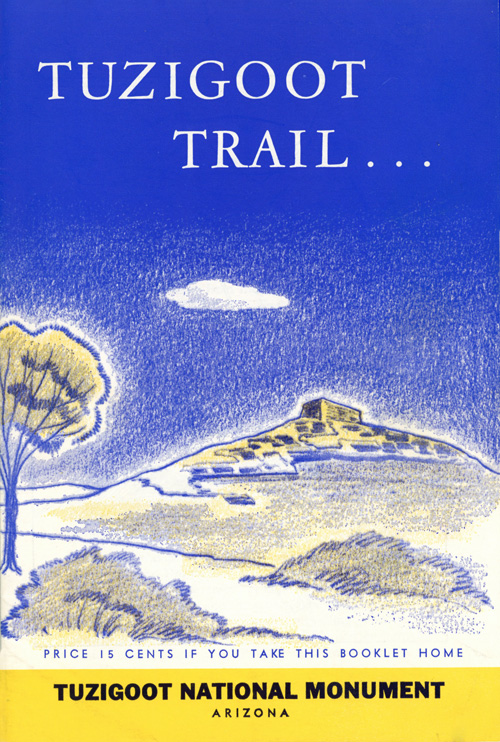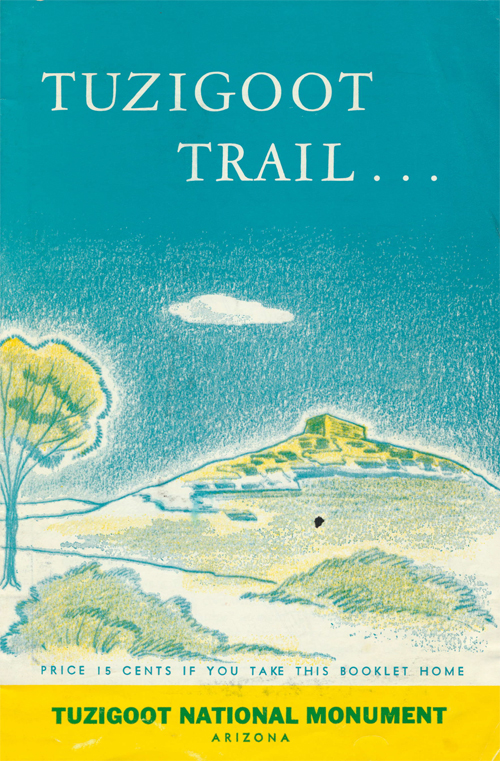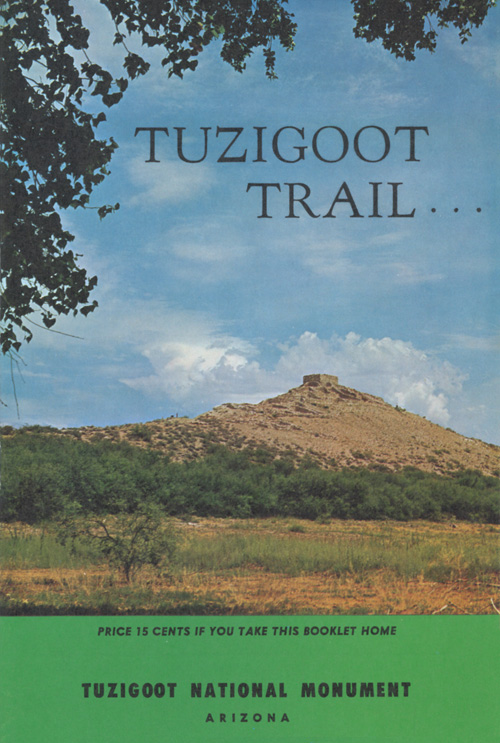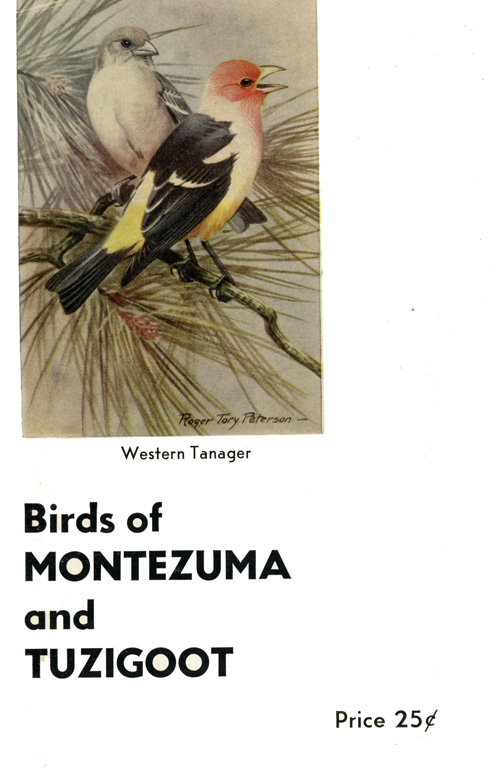|
Tuzigoot National Monument Arizona |
 |
 NPS photo | |
Ancient Farmers of the Verde Valley
Montezuma Castle and Tuzigoot invite you into the world of the Southern Sinagua, who flourished in the Verde Valley hundreds of years ago. For thousands of years, hunters and gatherers had roamed the Verde Valley. The area's characteristic agriculture and architecture emerged later; influenced by the neighboring Hohokam and the Northern Sinagua.
The first permanent settlements here resembled those of the Hohokam culture from southern and central Arizona. Between 700 and 900 CE (Common Era) some Hohokam moved north into the valley. These productive farmers grew corn, beans, squash, and cotton using techniques like canal irrigation. They also made their distinct red-on-buff pottery and built ballcourts. One-room pit houses perched on terraces overlooked their crop fields in the bottomlands.
Northern Sinagua culture, centered around present-day Flagstaff, clearly influenced the above-ground masonry dwellings that appeared about 1125. Small structures and later pueblos, like those built by Ancestral Puebloan people living north of the Mogollon Rim, rose along major streams. By 1150, Southern Sinagua began building large pueblos, often on hilltops or in cliff alcoves. Montezuma Castle and Tuzigoot villages reached their maximum size in the 1300s and were occupied for another century.
No one knows why the Southern Sinagua migrated away from their pueblos by the early 1400s. It may have been overpopulation, depletion of resources, disease, conflicts within or between groups, climate change, or perhaps spiritual beliefs. Whatever the reasons, many Southern Sinagua likely migrated northward to pueblo villages. Others may have stayed in the Verde Valley and returned to hunter-gatherer ways.
Daily Life of the Southern Sinagua
The Southern Sinagua lived principally by farming and supplemented their staple crops by hunting and gathering. Their surroundings offered an abundance of resources: water from the river and streams, fertile land alongside waterways, and sufficient game—including deer, antelope, rabbit, bear, muskrat, and duck—to augment a diet that relied heavily on corn. They also mined a salt deposit a few miles from present-day Camp Verde. Evidence suggests that salt was traded widely throughout the region.
Skilled Southern Sinagua artisans fashioned stone tools like axes, knives, and hammers, as well as manos and metates for grinding corn. Other crafts included bone awls and needles, handsome woven garments of cotton, and ornaments of shell, turquoise, and a local red stone (argillite) for personal wear.
Another specialty was reddish-brown pottery, undecorated but highly polished. These plain vessels probably served for cooking and storage. Decorated pottery vessels found at archeological sites in this area arrived by trade with neighbors to the north, south, or east.
Southern Sinagua builders made do with local materials for their pueblos. The cobble walls at Tuzigoot are massive but poorly balanced. The limestone at Montezuma Castle is fairly soft and splits unevenly. Yet Montezuma Castle, protected from the elements, was so well built that it has stood for over 700 years. It is one of the best-preserved prehistoric structures in the Southwest.
Visiting the Park
 (click for larger map) |
Tuzigoot
Tuzigoot (Apache for "crooked water") is the remnant of a Southern Sinagua village built between 1000 and 1400. It crowns the summit of a long ridge rising 120 feet above the Verde Valley. The original pueblo was two stories high in places, with 87 ground-floor rooms. There were few exterior doors; entry was by ladders through roof openings. The village began as a small cluster of rooms inhabited by some 50 persons for 100 years. In the 1200s the population doubled and then doubled again.
Location Tuzigoot National Monument is 50 miles south of Flagstaff via US Alt. 89, the scenic road through Oak Creek Canyon.
Activities Both Montezuma Castle and Tuzigoot have visitor centers with exhibits on Southern Sinagua people who lived in this region. All three sites have short, hard-surfaced walking trails.
For a Safe Visit Stay on trails. Be alert for snakes. Avoid overexposure to sun and heat. For firearms regulations, check the websites.
Accessibility We strive to make our facilities, services, and programs accessible to all. For information go to a visitor center; ask a ranger; call, or check our website.
Related Sites You can learn more about Sinagua culture at Walnut Canyon National Monument, just east of Flagstaff, and Wupatki National Monument north of Flagstaff off US 89.
Source: NPS Brochure (2013)
|
Establishment Tuzigoot National Monument — July 25, 1939 |
For More Information Please Visit The  OFFICIAL NPS WEBSITE |
Brochures ◆ Site Bulletins ◆ Trading Cards

Documents
Acoustical Monitoring 2010: Tuzigoot National Monument NPS Natural Resource Technical Report NPS/NRSS/NRTR—2013/762 (June 2013)
Acoustical Monitoring 2010 and 2012: Tuzigoot National Monument NPS Natural Resource Report NPS/NRSS/NRR—2014/878 (Amanda Rapoza, Cynthia Lee and John MacDonald, November 2014)
Arizona Explorer Junior Ranger (Date Unknown; for reference purposes only)
Birds of Montezuma Castle and Tuzigoot (Henry H. Collins, Jr., 1950
Cave and Karst Resources Summary: Tuzigoot National Monument, Arizona (Limaris Soto, January 7, 2014)
Erosion Assessment for Montezuma Castle and Tuzigoot National Monuments NPS Natural Resource Technical Report NPS/SODN/NRTR—2010/281 (Travis Nauman, January 2010)
Final Master Plan, Montezuma Castle/Tuzigoot National Monuments, Arizona (October 1975)
First Conference on Research and Resource Management in Southern Arizona National Park Areas, May 13, 1996 (Timothy J. Tibbitts and Gloria J. Maender, eds., February 1998)
Foundation Document, Tuzigoot National Monument, Arizona (February 2016)
Foundation Document Overview, Tuzigoot National Monument, Arizona (January 2016)
General Management Plan/Environmental Assessment, Montezuma Castle National Monument/Tuzigoot National Monument, Arizona (January 2010)
Geologic Map of Montezuma Castle National Monument, Arizona (2019)
Geologic Resources Inventory Report, Tuzigoot National Monument NPS Natural Resource Report NPS/NRSS/GRD/NRR-2019/2017 (Katie KellerLynn, October 2019)
Invasive Non-native Plant Inventory for Montezuma Castle and Tuzigoot National Monuments NPS Natural Resource Technical Report NPS/SODN/NRTR—2009/268 (Theresa Mau-Crimmins, Melissa Mauzy, Sarah Studd and Guy R. McPherson, November 2009)
Junior Archeologist Program, Tuzigoot National Monument (Date Unknown; for reference purposes only)
Junior Arizona Archeologist (2016; for reference purposes only)
National Register of Historic Places Nomination Form
Tuzigoot Museum (Rodd L. Wheaton, February 2010)
Tuzigoot National Monument Archeological District (Susan J. Wells, September 24, 1987)
Natural and Cultural Resources Management Plan, Tuzigoot National Monument (June 1991)
Natural Resource Condition Assessment, Montezuma Castle and Tuzigoot National Monuments NPS Natural Resource Report NPS/SODN/NRR-2019/1966 (Lisa Baril, Kimberly Struthers, Andy Hubbard, Anna Mateljak, Deborah Angell, Cheryl McIntyre and Mark Brunson, August 2019)
Official Junior Ranger Activity Guide, Tuzigoot National Monument (Date Unknown; for reference purposes only)
Park Newspaper (Echoes): 2006 • 2008 • Fall 2009-Winter 2010 • Fall 2010-Winter 2011 • 2012-2013
Replicating a Prehistoric Masonry Room at Tuzigoot National Monument (Matt Guebard and Lucas Hoedl, Date Unknown)
Soil Survey of Tuzigoot National Monument, Arizona US Geological Survey Technical Report No. 67 (Bruce A. Lindsay, June 2000)
Springs, Seeps and Tinajas Monitoring Protocol: Chihuahuan and Sonoran Desert Networks NPS Natural Resource Report NPS/SODN/NRR-2018/1796 (Cheryl McIntyre, Kirsten Gallo, Evan Gwilliam, J. Andrew Hubbard, Julie Christian, Kristen Bonebrake, Greg Goodrum, Megan Podolinsky, Laura Palacios, Benjamin Cooper and Mark Isley, November 2018)
Status of Climate and Water Resources at Montezuma Castle and Tuzigoot National Monuments: Water Year 2016 NPS Natural Resource Report NPS/SODN/NRR-2017/1551 (Evan Gwilliam, Kara Raymond and Laura Palacios, November 2017)
Status of Climate and Water Resources at Montezuma Castle and Tuzigoot National Monuments: Water Year 2017 NPS Natural Resource Report NPS/SODN/NRR-2018/1692 (Evan L. Gwilliam, Gregory Goodrum, Kara Raymond and Laura Palacios, August 2018)
Streams Monitoring at Montezuma Castle and Tuzigoot National Monuments: Status Report for Water Years 2009–2011 NPS Natural Resource Technical Report NPS/SODN/NRTR—2014/871 (Evan Gwilliam, Kara Raymond, Cheryl McIntyre, Stephen Buckley, Andy Hubbard and Travis Nauman, May 2014)
The Ranger Review
2009: 1 • 2, Aug. 30 • 3, Sep. 13 • 4, Sep. 27
2010: 1, Jun. 6 • 2, Jun. 20 • 3, Jul. 4 • 4, Jul. 18 • 5, Aug. 1 • 6, Aug. 15 • 7, Aug. 29 • 8, Sep. 12 • 9, Oct. 24
The Tuzigoot Survey and Three Small Verde Valley Projects: Archeological Investigations in the Middle Verde Valley, Arizona Western Archeological and Conservation Center No. 40 (Martyn D. Tagg, October 1986)
Tuzigoot: The Excavation and Repair of a Ruin on the Verde River near Clarkdale, Arizona (HTML edition) Field Division of Education (Louis R. Caywood and Edward H. Spicer, July 1935)
Tuzigoot Burials Western Archeological And Conservation Center Publications in Anthropology No. 60 (Keith M. Anderson, 1992)
Books

tuzi/index.htm
Last Updated: 01-Aug-2024

















